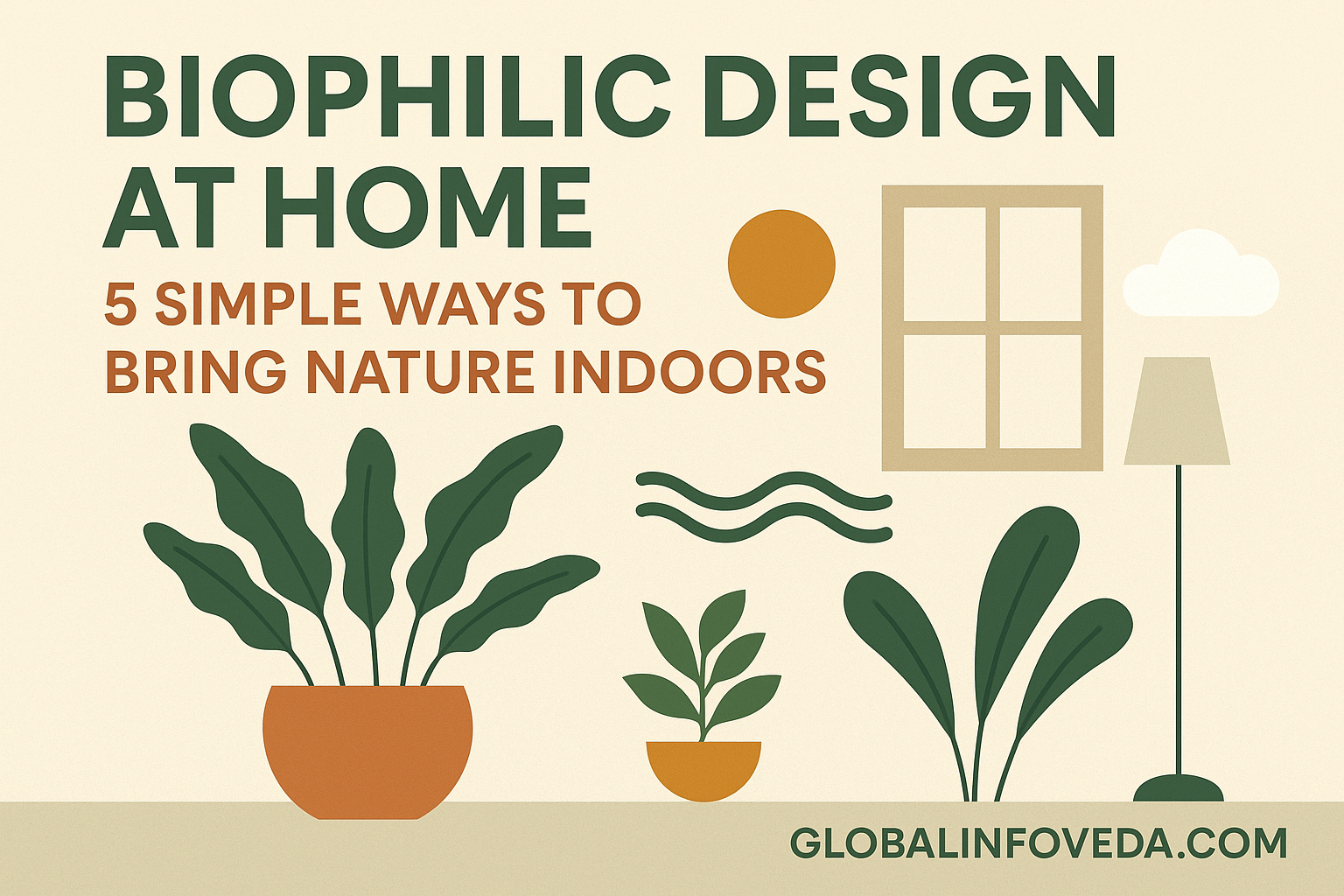Simple Ways to Bring Nature Indoors
In a world that’s increasingly urbanized and digitally saturated, our connection to nature is more crucial than ever. Biophilic design—a concept rooted in the idea that humans have an innate desire to connect with the natural world—seeks to reestablish this bond through our living environments. In 2025, this trend has gained massive momentum as people realize that incorporating natural elements into their homes is not only aesthetically pleasing but also beneficial for mental health, cognitive function, productivity, and overall well-being.
Scientific studies have shown that biophilic environments can reduce cortisol levels, enhance mood, and even accelerate healing. For urban dwellers facing space constraints, sensory overload, and rising stress levels, the biophilic approach offers a refreshing return to simplicity and harmony.
Whether you’re living in a city apartment, a suburban house, or a compact studio, these biophilic strategies will help you create a sanctuary that feels alive, restorative, and deeply human.
🌿 1. Add More Indoor Plants
Plants are the cornerstone of biophilic interiors. They purify the air, reduce stress, increase humidity, and introduce calming visual diversity. To incorporate them effectively:
- Windowsill Herb Gardens: Grow basil, mint, thyme, or rosemary near your kitchen window for fresh flavor and fresh air.
- Vertical Gardens: Use trellis systems, plant walls, or modular planters to grow upwards and save floor space.
- Themed Plant Corners: Create a corner with a mix of indoor plants like snake plants, fiddle-leaf figs, or spider plants for a lush jungle effect.
- Terrariums and Succulent Bowls: Low-maintenance and decorative, these are great for desks, shelves, and workstations.
- Seasonal Rotation: Rotate flowering plants like orchids or anthuriums to introduce seasonal vibrancy.
Tip: Rotate your plants every week to ensure even light exposure and prevent legginess. Use self-watering pots for convenience.
☀️ 2. Maximize Natural Light
Natural light influences circadian rhythms, mood, vitamin D absorption, and energy levels. To enhance natural illumination:
- Use Translucent Curtains: Sheer or white fabric curtains let in sunlight while offering privacy.
- Strategic Mirror Placement: Position mirrors to reflect light into darker corners of a room.
- Furniture Arrangement: Avoid blocking windows with tall shelves, wardrobes, or large electronics.
- Daylight Bulbs: Where natural light is scarce, mimic it with full-spectrum bulbs that imitate daylight.
- Architectural Enhancements: Consider installing skylights, clerestory windows, or glass doors if you’re renovating.
Bonus: Light-adaptive plants placed near windows create a dynamic interplay between interior and exterior rhythms.
🪵 3. Incorporate Natural Materials
Biophilic design values tactile authenticity—materials that age, breathe, and evolve with time. Embrace textures found in nature:
- Wood Elements: Hardwood floors, reclaimed wood shelves, rattan lighting fixtures, and bamboo mats create warmth and texture.
- Stone Features: Marble countertops, slate tiles, sandstone accents, or river pebbles in vases enhance earthiness.
- Natural Textiles: Swap synthetic fabrics for organic cotton, linen, wool, and jute—great for curtains, cushions, or bedspreads.
- Handcrafted Decor: Look for pottery, woven baskets, or macramé wall hangings with natural imperfections and artisanal charm.
- Earth-Friendly Finishes: Choose low-VOC paints and sustainable sealants to reduce indoor pollutants.
Pro Tip: Choose sustainably sourced materials and local artisans to align with ecological values and reduce environmental impact.
🌊 4. Embrace Natural Sounds & Scents
Creating a full-sensory experience is vital in biophilic interiors. To activate your auditory and olfactory senses:
- Soundscapes: Install compact indoor fountains, wind chimes, or use ambient nature sound apps that simulate rain, ocean waves, birdsong, or forest rustling.
- Aromatherapy: Use essential oils like cedarwood, eucalyptus, lemongrass, or lavender via diffusers, incense, or oil burners.
- Natural Scented Decor: Incorporate dried herbs, cinnamon sticks, pine cones, citrus peel bowls, and beeswax candles.
- Windows Ajar: Let natural breezes flow through to circulate fresh outdoor air, especially during early mornings and late evenings.
- Scent-Zoning: Use distinct scents for different rooms—lavender for bedrooms, citrus for kitchens, sandalwood for meditation corners.
These subtle yet powerful cues reduce anxiety, enhance memory recall, and support relaxation.
🎨 5. Use Earthy Colors and Nature-Inspired Art
Color psychology plays a major role in biophilic interiors. Earth tones and nature motifs help create grounded, comforting atmospheres:
- Wall Colors: Choose earthy palettes such as moss green, sage, clay, rust, ochre, sky blue, and stone gray.
- Artwork: Hang large-scale botanical prints, landscape photography, or watercolor paintings of natural scenes.
- Textile Patterns: Use cushions, rugs, or curtains with floral, leaf, wave, or mountain designs.
- Visual Rhythm: Arrange art or furnishings in flowing patterns that mimic organic forms like riverbeds or tree branches.
- Color Gradients: Mimic seasonal transitions by changing throw pillows or wall accents based on spring, monsoon, autumn, or winter tones.
These visual elements tie your interior narrative to the larger ecological rhythm of the earth.
Final Thought
Biophilic design is more than just a style trend—it’s a philosophy of well-being and ecological mindfulness. In our fast-paced, screen-dominated lives, reconnecting with nature at home helps reduce anxiety, improve focus, enhance creativity, and foster emotional balance.
These five strategies offer a manageable yet powerful blueprint for building restorative, healthy spaces that grow alongside you. You don’t need a forest outside your window to feel connected—just a few thoughtful, nature-forward design choices can make your home a living, breathing sanctuary.
Start small, observe, adapt, and let your space evolve organically—just like the plants and energy within it.
🌐 For more interior wellness tips and nature-inspired living ideas, visit GlobalInfoVeda.com
